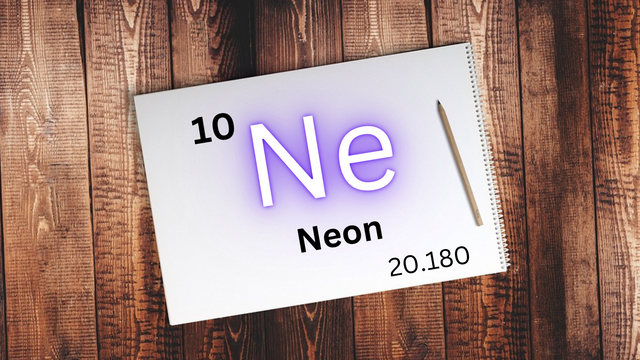 Source Made with Canva
Source Made with Canva
The most popular use of the element, neon is renowned for being used in neon lighting. Neon signs are made by placing a small amount of neon gas inside glass tubes, ionizing the gas with electrical voltage to cause it to generate a bright orange-red light, and then exposing the ionized gas to the air. Due to its attractiveness and durability, this kind of lighting is frequently used for commercial signage.
Neon has additional uses outside just being used as illumination. It can be found in vacuum tubes, television tubes, and cryogenics coolants, for instance. In the aerospace sector, it is used to research the Earth's atmosphere, and in the medical field, where it can identify lung damage and other respiratory problems.
As neon only exists in trace levels, it is collected from the atmosphere. It is made through a procedure called fractional distillation, which involves cooling and condensing air into several components according to their boiling points. Although neon is not a rare element and is used in modest quantities, its production is constrained by the expense of removing it from the environment.
Uses of Neon |
|---|
Neon Lighting:
Neon lighting is the most well-known application of neon. It is employed to produce the vivid, colorful signage and displays that are frequently found in taverns, eateries, and retail spaces. Neon signs are made by placing neon gas inside glass tubes, adding an electrical charge to ionize the gas, and then allowing the ionized gas to generate a bright, recognizable glow.
Vacuum Tubes:
Neon gas is also utilized in vacuum tubes, which are crucial parts of electrical gadgets like radios and televisions. The neon gas is utilized to increase the device's effectiveness and help maintain the vacuum inside the tube.
Cryogenics:
Neon gas is perfect for use in cryogenics since it has a very low boiling point. It is frequently employed as a coolant in high-tech devices that need extremely low temperatures, like superconductors and imaging devices for medical usage.
Aerospace Industry:
Neon gas is important in the aerospace sector due to its special characteristics. It is employed in both spaceship propulsion systems and studies of the Earth's atmosphere.
Medical Diagnostics:
Neon is also employed in the diagnostic process in medicine, particularly in the discipline of pulmonology. It can be used to identify breathing problems, including lung damage and other respiratory disorders.
Industrial Procedures:
Neon gas is utilized in a number of industrial procedures, including cutting and welding. During the production of electronics and other delicate components, it can also be utilized to produce a shield of protective gas.
Neon is a significant and adaptable element that finds use in a variety of industries, including lighting, electronics, cryogenics, aircraft, diagnostics for health care, and industrial operations. Although neon lighting is the most popular application, its special qualities make it a valuable resource for many industries, and it is still a vital component of contemporary technology and production methods. Neon is a valuable resource that has been essential to technical developments, whether it is used to generate eye-catching signage, maintain vacuums in electronic devices, or as a coolant in medical imaging machines.
